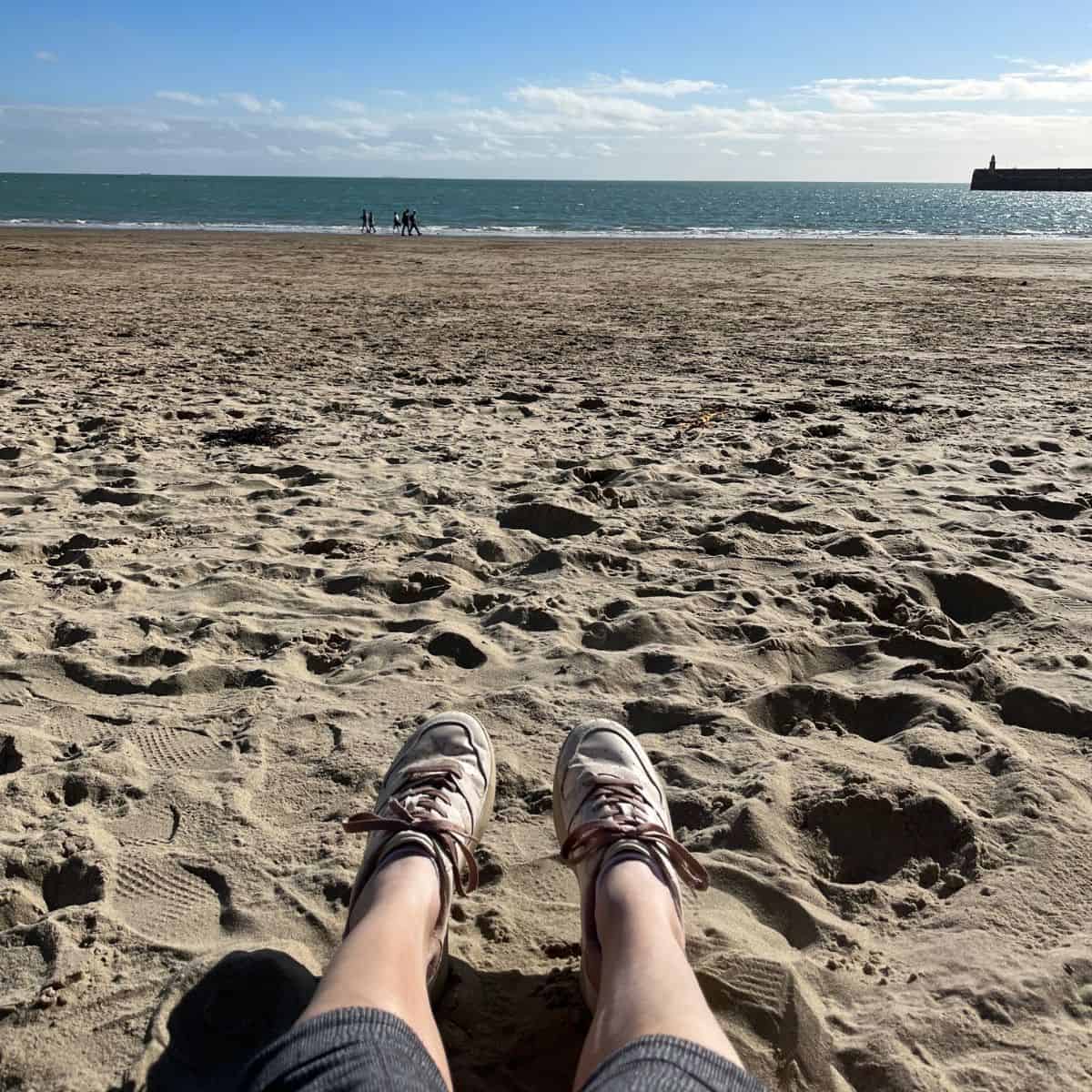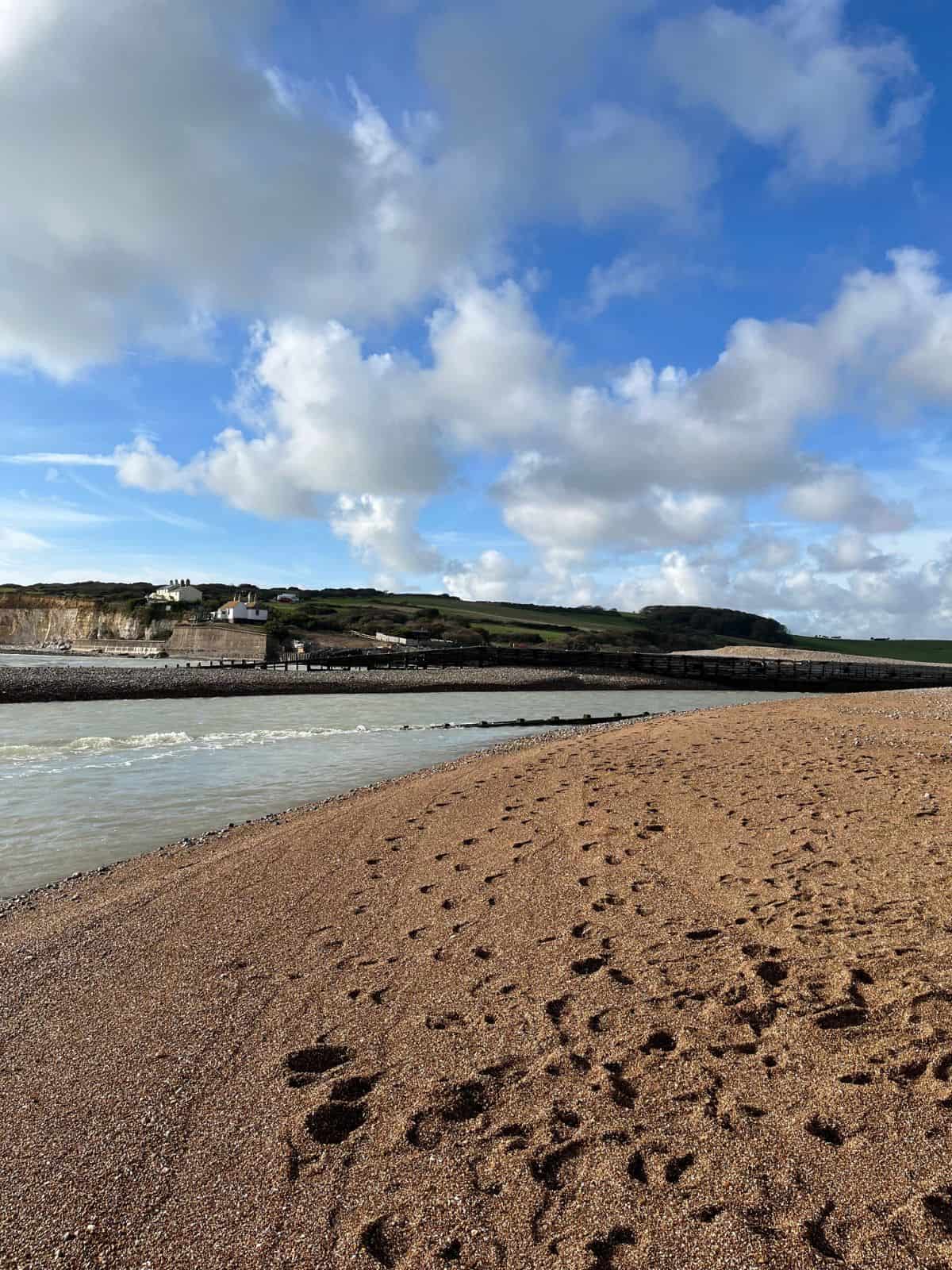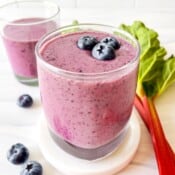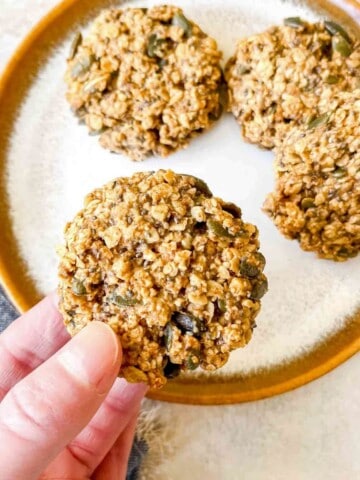Seeing people do everyday things without any issues definitely makes me 'feel' how my life is different living with PoTS / dysautonomia. It reminds me that my body doesn't work quite the way it should, and that I have to make many adjustments to my day.

A while ago I was on a train that was pulled into a station platform. I looked over and there were about a dozen people standing waiting for a train that wasn't going to arrive for about 20 minutes. It struck me that I can't stand completely still for very long without tensing my calf muscles or walking up or down.
I heard a joke once that a person living with PoTS can always hunt out a seat - and it's definitely true, I have eagle-eyes for one! It was actually a rather emotional realisation to see those people waiting for a train so effortlessly and know that it is far from effortless for me.
This post is for informational purposes only, and should not be taken as medical advice in any way. Please speak with your doctor if you suspect you have dysautonomia, and for treatment options.
Jump to:
My diagnosis of PoTS
My diagnosis for PoTS (postural orthostatic tachycardia syndrome) was a long time coming, as it seems to be for a lot of people diagnosed with this or dysautonomia. I had gone back and forth to the doctors for a long time with a diagnosis of chronic migraine and fibromyalgia already under my belt, but with other symptoms that didn’t seem to fit those conditions. Like many people (often females, to be honest) living with PoTS or dysautonomia, these symptoms were put down to anxiety for quite some time.
After a while, fortunately for me, the neurologist that I was seeing for chronic migraine suggested that I have a consultation with one of his colleagues, a specialist in autonomic issues. I hadn’t ever heard of PoTS or dysautonomia at this point, but was rather relieved to have a referral to further investigate symptoms.
To cut a long story short, and fast forwarding several years, I saw a specialist in PoTS and he sent me for tests, including a tilt test, 7-day ECG, various scans of my heart, blood tests and urine tests. Some of the latter were to rule out other conditions, such as Lyme, which can have similar symptoms. I actually ended up having two tilt tests, as one was with EEG monitoring as well. That test showed that my heart-rate increased to the point that would usually suggest a PoTS diagnosis. Many years after that other tests, such as autonomic function tests, showed that I have dysautonomia, but do not meet the criteria for PoTS – very confusing!
Living with PoTS / dysautonomia
Everyday my body reminds me that I am living with dysautonomia, and that I have to be attentive to how my body feels and what I do. There is the usual symptom of feeling light-headed when I stand up too quickly, fatigue, dizziness, racing heart-rate, tight chest and so much more.
Some days are better than others, and my symptoms fluctuate in their severity. People living with PoTS or dysautonomia can have varying symptoms, and these can range from mild to severe. I would categorise myself as mild, as I am still able to walk around and do most activities, just with symptoms while I do them. And definitely with increased fatigue!
At the moment my symptoms are flared-up, which for me means that heart-rate increases far more than it should and I get breathless when standing and walking, or just moving around at home doing household tasks. I often get overtaken by people far older than I am when I walk to the shops, as I have to go at a snails pace to avoid becoming overly breathless and getting more significant chest ache/pain . . .

Treatments
On the advice of my doctor I undertook a lot of different diet and lifestyle changes that, alongside medication, are known to be helpful for those living with PoTS / dysautonomia. Of course, you should always follow the advice of your doctor, and some of these areas may not be advised for you depending upon other medical conditions or form of PoTS.
Books
One thing I have found very helpful is to do a bit of reading around living with PoTS / dysautonomia. Although my doctor is fantastic, I find that having some resources at home helpful as it can refresh my memory on lifestyle measures such as diet, exercise and stress management.
Some of the ones I find most helpful:
Exercise
I've always loved to exercise. Back in the day I used to go to the gym, to classes such as Bodypump and spinning and run outside with a friend. Then all my symptoms hit and I went to being virtually house-bound at times. My motivation to begin to exercise again came from my doctor who told me that it can make symptoms better over time. As PoTS UK describes, there ‘is evidence that light to moderate exercise is beneficial or even curative in some cases of POTS’.
But where to start when I had a heart-rate that sky-rocketed when I so much as stood up or walked up the stairs? I saw a physiotherapist who specialises in PoTS, and was advised to start with exercise that I could do while sitting down - a pedal exerciser. I sat on the sofa or on a chair and pedalled away while watching TV. It was great to be able to exercise to the programme she set me, and do so at home rather than having to join a gym which felt completely overwhelming.
Once I was stronger I gradually increased my walking time and speed, and then added in resistance work as well. We focused on building strength in my legs and core, to help stop the blood pooling symptom that I have (and is common for those living with PoTS).
Now, on a (very) good day, I can go for a run! I truly can't believe that I can do that now. It seemed like a complete impossibility several years ago. I actually got really emotional the first time I ran for five minutes without stopping.
Increasing water intake
Increasing water intake is recommended for many with PoTS / dysautonomia. As Dysautonomia International describe, one of the 'most common treatments for POTS include[s] increasing fluid intake to 2-3 liters per day'.
I find it a bit of a challenge at times, but it does help symptoms a great deal and I can find I get more dizzy if I don't drink enough. So I always have a big bottle of water with me, wherever I am.
Increasing salt intake
With my form of PoTS, and because I have low blood pressure, I was advised by my doctor to increase my salt intake. It is important to seek advice from your doctor on salt intake, and it should be avoided for certain forms of PoTs or if you have other medical conditions. Dysautonmia International notes that 'increasing salt consumption to 3,000 mg to 10,000 mg per day' is advised for many living with PoTS.
Increased water consumption I could handle (just!), but all the salt was so, so tough. Regular table salt is, well, very salty tasting (go figure!). It made me feel nauseous and all my food just tasted of salt, nothing else.
Then my cardiology nurse suggested that I try pink Himalayan salt, and that this was recommended by my doctor as well. I find it much easier to include in my meals as it doesn't taste as strong, to me at least.

Reducing carb-heavy meals
Now I am a carb-queen. I love bread, pasta, noodles, rice etc etc. However, it is recommended to reduce refined carbohydrates - so your typical white bread and pasta. I know, it's hard! This suggested reduction in carb intake is because, as PoTS UK describes, after eating ‘blood is diverted to the digestive tract and away from maintaining blood pressure and heart rate which may increase symptoms’.
To try and prevent this increase in symptoms, it is also advised to eat smaller meals more often and, in particular, avoid large carb-heavy meals. Personally, I try to eat four smaller meals a day rather than three larger ones and feel better for doing so. While I am still a big fan of a bowl of pasta, I try to reduce my serving of the pasta itself and add more fresh vegetables and cheese instead. So, for me, it is about reducing carbs rather than eliminating them altogether.
Compression clothes
Although I cannot wear them now due to a skin sensitivity, when I first began living with PoTS I wore compression leggings or tights. Compression leggings can help blood flow in the legs and so are suggested for PoTS patients (NHS). I did receive some compression tights on prescription from my doctor, but I also bought my own leggings which I found to be more comfortable and meant that I could wear them with a t-shirt in the summer, or a jumper when it was colder. I found it hard to wear tights all the time as it essentially meant that I had to wear a skirt or dress, and I simply didn’t want to all the time!
I used to wear the Skins compression leggings and found them to be really good quality and well-made. They definitely had that compression feeling, but without being uncomfortable (in my opinion). The Skins brand is actually mentioned by PoTS UK. It does note that the compression in the leggings is likely to be lower than is suggested for PoTS but that they provide an alternative that may be more appealing to some. Please note that people with certain conditions should not wear compression clothing – so check with a doctor first.
Nausea relief bands
With PoTS and dysautonomia nausea can be a common symptom and really debilitating. I can have periods of months with constant nausea and it's so upsetting.
One thing to discuss with your doctor is whether nausea relief bands may be helpful to you. They work through acupressure and are a non-drug treatment that has been used for centuries. Personally, I like the Blisslets bracelets as they don't look medical and just like stylish jewellery that is part of your outfit.
Blisslets has kindly given me an affiliate code for 15% off for my readers with the code fibrofog
Avoiding drinking lots of caffeine or alcohol
Avoiding caffeine in coffee has definitely helped my PoTS / dysautonomia symptoms. Before I was diagnosed and at college I was a BIG coffee drinker. It got me through early morning classes, late nights writing papers and revising for exams. But if I had one too many cups of coffee I would get shaky and jittery, and my body felt a bit 'off'. In hindsight, I wonder whether this was due to my undiagnosed dysautonomia . . .
I couldn't give up coffee altogether so I switched to drinking decaf for a variety of reasons. Most of all, I stopped drinking caffeinated coffee because of chronic migraine, and then the PoTS diagnosis affirmed to me that I should avoid it. When I was diagnosed with MCAS I initially stopped drinking coffee altogether, but then experimented with various brands and found that I could drink coffee with MCAS - just in particular ways. These days I don't drink decaf coffee everyday but a few times a week, and I don't see any spike in PoTS-like symptoms when I do.
These changes to my lifestyle have been hugely beneficial for me as a person living with PoTS / dysautonomia. I hope that it provides some treatment options to discuss with your doctor, or a little motivation to keep going with them if you are already pedalling away and eating all the salt! Please do remember that we are all different, and it is important to follow the advice of your doctor as to any lifestyle changes or products used.
Related posts
Best health and wellness products for chronic illness
I'm active on Instagram and Twitter if you would like to follow along for more on living with chronic illness!
Helpful products for those living with POTS / dysautonomia
Using a pedal exerciser, if advised by your doctor or physiotherapist, can be a good way to increase leg strength and you can pedal away at home while watching TV! Relatively inexpensive as well. US link: pedal exerciser; UK link: pedal exerciser
If you have been advised by your doctor to have a higher salt intake, then pink Himalayan salt is a great option and is less processed than regular table salt. Tastes less salty as well! US link: Sherpa pink Himalayan salt; UK link: Silk Route pink Himalayan salt
For those who need some extra hydration, the Nuun hydration tablets are a good option and especially good if you are away from home. US link: Nuun tablets (strawberry melon); UK tablets: Nuun tablets (strawberry lemonade)
Another hydration tablet brand for electrolytes is Drip drop hydration. US link: Drip drop lemon and berry
UK link: ORS hydration lemon flavour (similar product)
Showering can cause a lot of fatigue, and standing can make symptoms difficult. It may be worth trying a shower stool if this is the case. US link: Drive medical adjustable shower stool; UK link: Drive medical adjustable shower stool

















Sheri Stockle says
Hi I’m new to the pots diagnoses. I’ve noticed that I can’t walk very far, along with standing very long. I’m in my early 50’s and feel that I’m still far too young for a walker with a seat, but have read that some use them. Is this common? Are most still able to work? I’ve tried to figure out how I’m able to work, when half the time, I’m in a brain fog, and can’t stand or walk too long? All of this scares me and confuses me. Advice is very welcomed. Thank you, Sheri
throughthefibrofog says
Hi Sheri, I'm sorry to hear that you are having difficulty with walking, and standing too. I'm not a doctor, and I would suggest that you speak to a specialist who can advise you. PoTS seems very variable in terms of symptoms from what I understand, and some people have more difficulties that require assistive devices. I hope you can find a supportive doctor who can further advise you. Best wishes, Claire
Carrie Kellenberger says
Excellent and informative post!
I stopped riding public transpo completely five years ago after realizing the same thing. If I can't get there by cab or my husband can't drive, I just don't go anymore. It's a struggle and a strange feeling to work through.
"A little while ago I was on a train that was pulled into a station platform. I looked over and there were about a dozen people standing waiting for a train that wasn’t going to arrive for about 20 minutes. It struck me that I can’t / don’t do that. I can’t stand completely still for that length of time without moving my feet from side-to-side, tensing my calf muscles or walking up or down a bit. Ideally, I would hunt out a seat, and if there isn’t one then I often resort to finding a quiet place to sit on the floor (checking that it isn’t too dirty first!) or a low-level wall."
Like you, my doctors have told me to increase salt intake and to try to eat several smaller meals per day instead of large meals. Although I find that everyone is totally different with diet, the similarities are always striking for basic ideas about how to manage these types of things. It has helped!
Sheryl Chan says
The abilities of healthy people can sure make us feel extra limited and down. Thanks for sharing your coping strategies they're really useful!
Shruti Chopra says
Hi Claire! I love this of treatment options. I very easily forget the ways I can manage better, so I've bookmarked this. Also I find it very weird how a criteria to be diagnosed with various medical conditions keeps changing. I understand research brings new things to light, but I feel it hurts and harms a patient feeling validated and then how they're treated by the rest of the doctors. Not sure if I made sense there, but that's what I feel every time there is a change - especially with POTS and EDS.